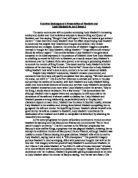Toshiro Mifune delivers a tour de force performance as the highly conflicted protagonist who becomes increasingly paranoid and hysterical as the movie progresses. One particularly outstanding scene is the one in which he hallucinates of the apparition of Yoshiteru Miki (Akira Kubo), Washizu’s fellow comrade, in his own home.
Washizu’s home is another ingenious cinematic achievement of Kurosawa and the production design team. It is depicted by an architecturally bare room, and its theatrical austerity is hypnotic and befitting as it serves as a stark contrast with the intense scenes of explosive outdoor violence that both precede and entail it. These comparatively subdued indoor scenes provide the arresting compactness of those scenes on the Japanese stage, and certainly present Washizu and his wife in a refreshing and engaging manner.
Lady Asaji Washizu is played by Isuzu Yamada in an equally laudable turn of her role. She has the honourable distinction of starring in one of the film’s most memorable and spectacular sequences, where she, daze-like, washes her hands clean of the ostensible blood. However, there is a glaring lack of soap and water as she monotonously repeats the process over and over again, and one is tempted to read deeper into the act as a desire to cleanse herself of the guilt that is haunting her.
This hand-washing ritual, combined with her husband’s visions, is evidence of the human condition, but from a different perspective: this posits that even the most nefarious of characters, as Lady Washizu is portrayed to be because of her horrifying make-up and manipulative behaviour whilst Washizu himself is a murderer, can have a conscience, albeit that conscience reveals itself in the most unusual ways.
Lady Washizu is a manifestation of another one of the film’s numerous successes – the make-up. With her additional pair of artificial, drawn-on eyebrows and unnaturally pasty complexion, Lady Washizu is undisputedly one of Throne of Blood’s most chilling characters. Coupled with the appearance of the indeterminate spectre at the outset of the film, one cannot help but marvel at the remarkable power of make-up. Both these characters are paralleled not only by the similarity of their make-up, but also by their unnatural stillness.
Besides the ghostly make-up, the film’s supernatural mood is further evoked by its monochromatic nature, its soundtrack which is interestingly peppered with harsh and creepy noises, and its Noh theatre-inspired form. Noh elements consist of the bare sets, like that of Washizu’s abode, and especially the stylized performances, which completely invert the realism and naturalism convention of acting. Noh theatre is often distinguished by its unique and distinctive slow, spartan grace, and therefore, long takes and minimal camera movement dominate the movie.
It does not take much to notice that Kurosawa's camera is handled with magnificent skill. He projects an intense imagistic and visual style, and clearly demonstrates a keen eye for detail, such as in the deliberate scene where Washizu and Miki ride towards the camera before turning away, as if inhibited by an intangible obstacle, for a total of twelve times. The patience he exhibits in executing this scene is extremely rare in cinematic fare nowadays, and it is proof of his dedication and meticulousness in attending to his work. Kurosawa also deals with the themes of space and time in his film. Space seems to be magnified by the sparseness of the sets, whilst repetition and its slow pace are constantly used to underscore the perpetual cycles of life.
Although Throne of Blood is based on Macbeth, it also takes several liberties, which, in my personal opinion, work to its advantage.
One such amendment to the story is the omission of the character of Macduff. This destroys the heroic and righteous moral ending of the original Macbeth. Instead, Washizu is killed by an ambiguous mass assassination, a morally inconclusive ending that obtains more sympathy for Washizu than Macbeth’s own demise at the hands of Macduff did for him. The repetition of the chant that follows in this film’s final moments implies that this sequence of events is inevitable, and will happen again due to the fundamentally ambitious nature of humans.
Furthermore, there is the corruption of the Duncan character. Washizu murders his Lord, who had himself murdered his own Lord. This changes the entire dynamic of the story, once again emphasising the cycle of doom Washizu is caught up in, and pointing out the inherent corruptness of this system of rule. There is no obvious moral successor to the Cobweb castle, because all the Lords have taken the Throne with some degree of bloodshed. Whilst Shakespeare focuses on the noble but flawed individual, Kurosawa examines the flawed society as a whole, or a universal flaw in human nature. In this respect, Washizu is indubitably a far different creature to Macbeth, as he has been more humanized, his motivation more understandable, and his tragedy more inevitable.







